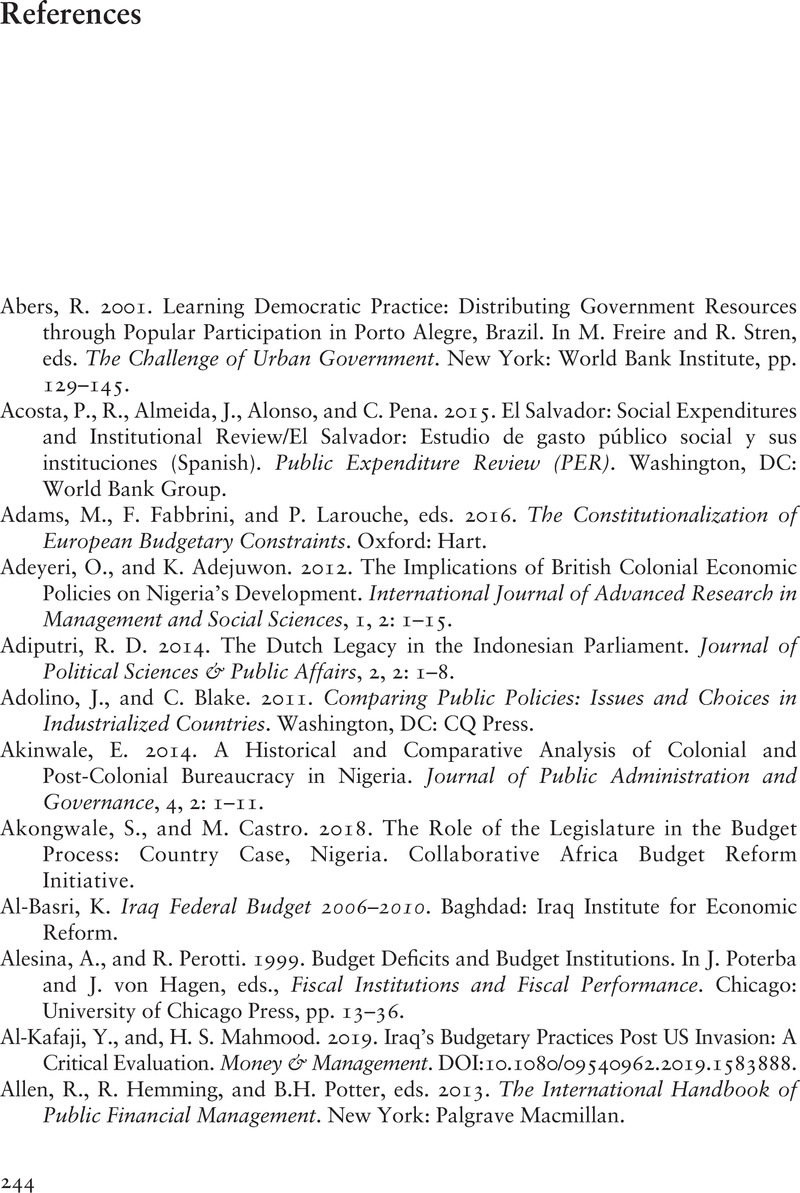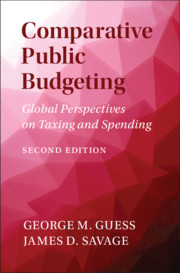Book contents
- Comparative Public Budgeting
- Comparative Public Budgeting
- Copyright page
- Dedication
- Contents
- Figures
- Tables
- 1 Comparative Budgeting
- 2 Budgeting in the United States
- 3 Budgeting in Commonwealth Countries
- 4 Budgeting in the European Union
- 5 Budgeting in Central and Eastern Europe and the Former Soviet Union
- 6 Budgeting in Latin America
- 7 Budgeting in Diverse Cultural Settings
- 8 Comparative Budgeting: Summary and Conclusion
- References
- Index
- References
References
Published online by Cambridge University Press: 07 January 2021
- Comparative Public Budgeting
- Comparative Public Budgeting
- Copyright page
- Dedication
- Contents
- Figures
- Tables
- 1 Comparative Budgeting
- 2 Budgeting in the United States
- 3 Budgeting in Commonwealth Countries
- 4 Budgeting in the European Union
- 5 Budgeting in Central and Eastern Europe and the Former Soviet Union
- 6 Budgeting in Latin America
- 7 Budgeting in Diverse Cultural Settings
- 8 Comparative Budgeting: Summary and Conclusion
- References
- Index
- References
Summary

Information
- Type
- Chapter
- Information
- Comparative Public BudgetingGlobal Perspectives on Taxing and Spending, pp. 244 - 260Publisher: Cambridge University PressPrint publication year: 2021
